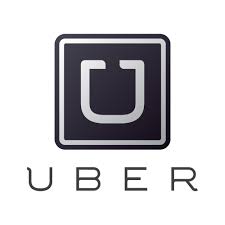I have been following companies like Uber, Flipkart, Amazon etc with keen interest in the last few months. Each company has a its own values, rule-books and way of going about things but what truly intrigues me is a common denominator that ties them all : The desire to reach a critical mass, putting everything else ‘virtually’ on a backburner. Critical mass refers to these company gaining momentum by way of having a large user base and topline. These companies, hope that in the long run, with a massive user base, that runs in millions and a massive topline in billions, they will be able to extract profits by unlocking the profits from these very customers that have been addicted to rock bottom prices in the past. This future, in many cases, can refer to years or even a decade far into the future. Will that ring true or sounds all too fancy ?
Don’t get me wrong. There will be a handful of companies that will eventually be profitable in the long run by building a large user base and using that loyalty to ‘milk’ profits. 1 in 10 companies will eventually hit a home run and be the envy of the corporate world tomorrow. What amazes me is the fact that virtually every entrepreneur who dreams to make it big follows the same principle and strategy: building a ‘critical mass’ and leaving the task of making profits for the next decade.
Uber is something that proves to be an inspiration for many budding ambitions.  Business Insider took out a report in June where it claims that Uber has a top-line of around $10 billion dollars. It further goes on to say that with a margin of 20%, the gross revenue turns out to be in the range of $2B. It is safe to say that at an operating level, Uber is or will be profitable (These are only estimates as Uber is not a listed firm yet). Uber has a truly disruptive business model and has revolutionized the way we look at point to point travel. It has made transportation simpler, leaner and more customer friendly. Uber adds real value in the industry it operates. It is simultaneously building scale and profitability.
Business Insider took out a report in June where it claims that Uber has a top-line of around $10 billion dollars. It further goes on to say that with a margin of 20%, the gross revenue turns out to be in the range of $2B. It is safe to say that at an operating level, Uber is or will be profitable (These are only estimates as Uber is not a listed firm yet). Uber has a truly disruptive business model and has revolutionized the way we look at point to point travel. It has made transportation simpler, leaner and more customer friendly. Uber adds real value in the industry it operates. It is simultaneously building scale and profitability.
 Booking.com is another example. It simply acts as a middleman between the buyer and the service provider and charges a fee (around 10-15%). Although booking.com will not actual numbers, a leaner model like this ensures profitability as well as a large user base in the long run. Booking.com’s unique selling proposition (‘USP’) lies in the fact that it offers a large selection of hotels, something that is difficult to replicate. It does not charge its’c customers directly, and that is another benefit that customers are offered. Booking.com, again, is offering real value to its customers.
Booking.com is another example. It simply acts as a middleman between the buyer and the service provider and charges a fee (around 10-15%). Although booking.com will not actual numbers, a leaner model like this ensures profitability as well as a large user base in the long run. Booking.com’s unique selling proposition (‘USP’) lies in the fact that it offers a large selection of hotels, something that is difficult to replicate. It does not charge its’c customers directly, and that is another benefit that customers are offered. Booking.com, again, is offering real value to its customers.

 There are instances where a large user base does not necessarily lead to sky-high profits in the long run. In the early 2000s, a number of free e-mail providers opened shop and provided free e-mail accounts, hoping that eventually, they will land with a lot of money in their pockets. Customers could choose between Mail.com, Yahoo, Hotmail, Rediff and a host of other providers. In the next few years, all of these vanished and today, Hotmail is struggling to remain relevant despite re-branding it as outlook.com and Gmail seems to be the ultimate winner.
There are instances where a large user base does not necessarily lead to sky-high profits in the long run. In the early 2000s, a number of free e-mail providers opened shop and provided free e-mail accounts, hoping that eventually, they will land with a lot of money in their pockets. Customers could choose between Mail.com, Yahoo, Hotmail, Rediff and a host of other providers. In the next few years, all of these vanished and today, Hotmail is struggling to remain relevant despite re-branding it as outlook.com and Gmail seems to be the ultimate winner.
Customers opted for mail accounts because they were free. Even today, many customers would close an account if they were asked to pay up. Why? Because another mail provider would take it’s place and offer the service for free. Google has depended on its ‘search’ capabilities to capitalize on such a user base, without which, it would have little or no revenue. An access to a large pool of data and Google’s ability to make sense of it is another advantage.
It remains to be seen how players like Whatsapp, now an entity owned by Facebook, end up in profits in the long run. Whatsapp, that earlier charged a $1 fee, is now giving away it’s app for free in the face of intense competition from Line, Kik etc. Whatsapp focuses on messaging with a clean interface while others like Line and WeChat have opted to sell value additions like stickers and games on its app to bring revenues.
 In other cases, players are forced to walk the path of ‘critical mass’ to survive. Take the case of Snapdeal.com, an online marketplace in India. If I were to hypothetically assume that the management intends to focus on profits even in the short run, it would be almost impossible to do so with fierce competition from Amazon and Flipkart. Snapdeal could be in a dilemma: charge a higher price and Snapdeal would be out of business; charge a lower price and at least Snapdeal is living to fight for another day.
In other cases, players are forced to walk the path of ‘critical mass’ to survive. Take the case of Snapdeal.com, an online marketplace in India. If I were to hypothetically assume that the management intends to focus on profits even in the short run, it would be almost impossible to do so with fierce competition from Amazon and Flipkart. Snapdeal could be in a dilemma: charge a higher price and Snapdeal would be out of business; charge a lower price and at least Snapdeal is living to fight for another day.
To avoid, what I call a ‘double edged’ situation like this, one has to build a niche and create strong barriers of entry. Economies of scale itself is a barrier of entry but one cannot use it as a weapon when the other competitor relies on exactly the same thing!
 Zappos is a fine example of providing exceptional value to their customers. It is largely knows for its customer service that is groundbreaking even to this day. Now acquired by Amazon, it relies on customer service to drive profits and revenues. Culture and work philosophy that itself is a USP and cannot be easily replicated.
Zappos is a fine example of providing exceptional value to their customers. It is largely knows for its customer service that is groundbreaking even to this day. Now acquired by Amazon, it relies on customer service to drive profits and revenues. Culture and work philosophy that itself is a USP and cannot be easily replicated.
 Twitter, although still in the red, has bright chances of making it on the other side. To me personally, Twitter is an equal or even a more powerful tool of communication that Facebook. Tweets are more viral and the focus lies on content in 140 characters and usage of # or hashtags. Facebook, I feel is trying to be everyone at the same time. And that means focus on the user is taking a backseat.
Twitter, although still in the red, has bright chances of making it on the other side. To me personally, Twitter is an equal or even a more powerful tool of communication that Facebook. Tweets are more viral and the focus lies on content in 140 characters and usage of # or hashtags. Facebook, I feel is trying to be everyone at the same time. And that means focus on the user is taking a backseat.
However, Critical mass doesn’t always naturally lead to profits in my opinion. It essentially depends on whether customers are hooked on to your product or service because they are priced cheaply or whether they actually find real value in the offering and will be willing to pay a higher price, if asked for. This should take into account the substitutes whether the brand is truly offering something innovative that cannot be replicated and hence, they could build profits by either hiking prices or further innovating on their business model.
The problem is that most entrepreneurs end up opting this not because it is the most efficient and optimal option available, but because this is the easiest way out. After all, with enough capital and funding, it is far easier to sell at lower prices and build a company than to make profits by showing ‘real value’ to your customers from the very first day.
Venture capital firms, hedge funds and private equity investments into such businesses are reasonable. After all, even if a handful of these investments click, they end up being rewarded with not just high ROIs but also end up being refunded on all failed investments!
So, when one starts a business, I hope one explores all the possibilities, including the option of adding real value to customers in ways where they are readily willing to offer the margin the business deserves. In a technological era that is constantly changing, I am hopeful that there will be more entrepreneurs who will continue this unbridled wave of innovation but not at the cost of profits. Or is a user base more valuable than the money itself? Are we missing out on a link? Time always has the right answer.
Time.com took out this interesting article in 2013. Although it is dated now, the perspective and details are relevant even today : http://business.time.com/2013/10/29/these-8-internet-companies-are-worth-over-1-billion-but-they-havent-made-a-dime/


